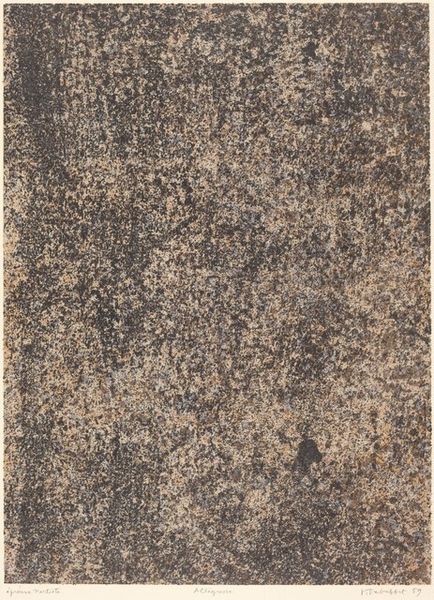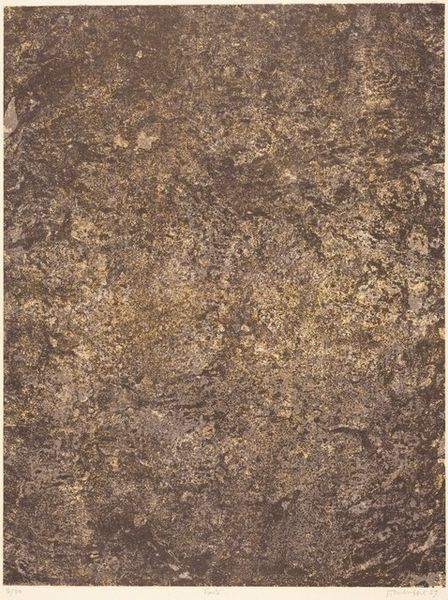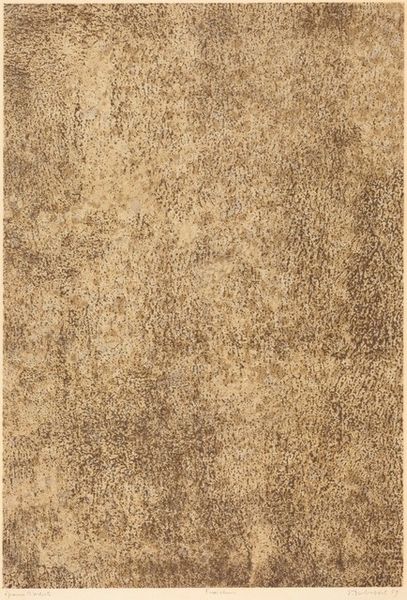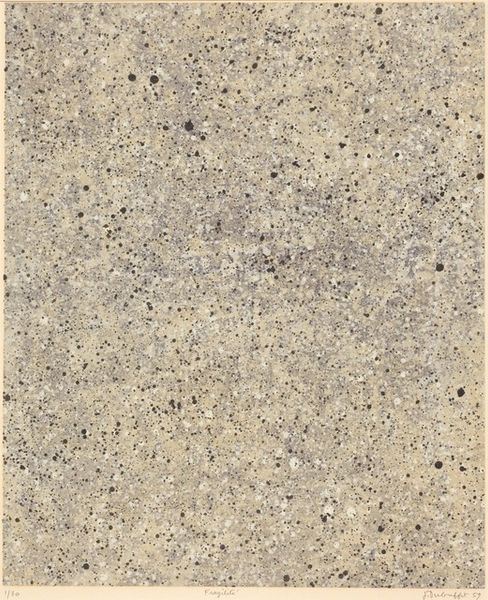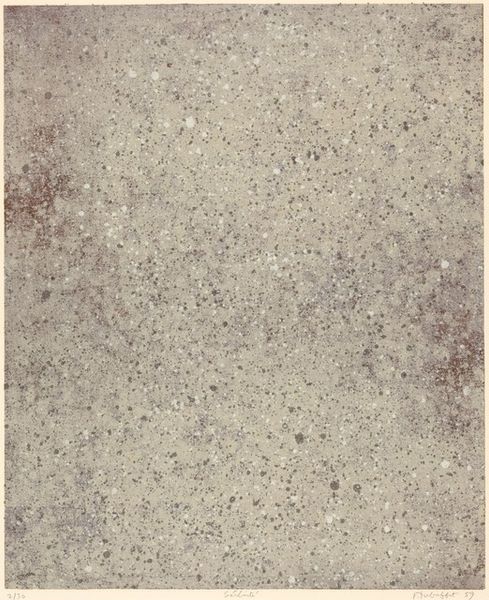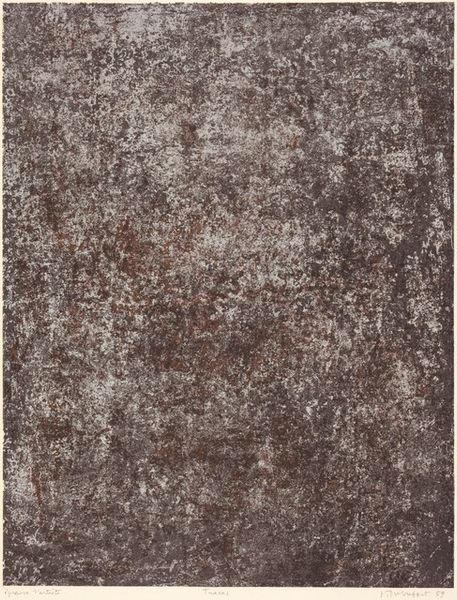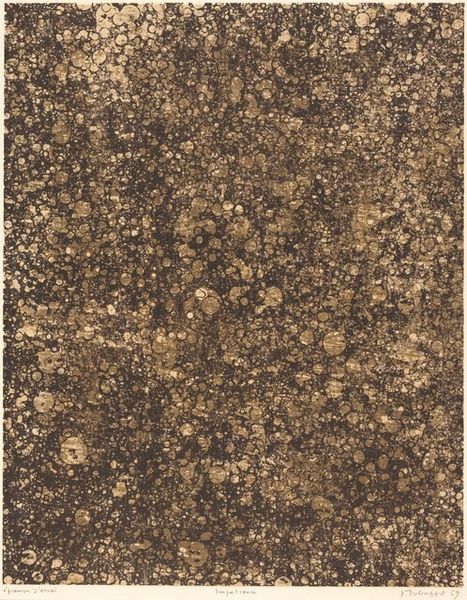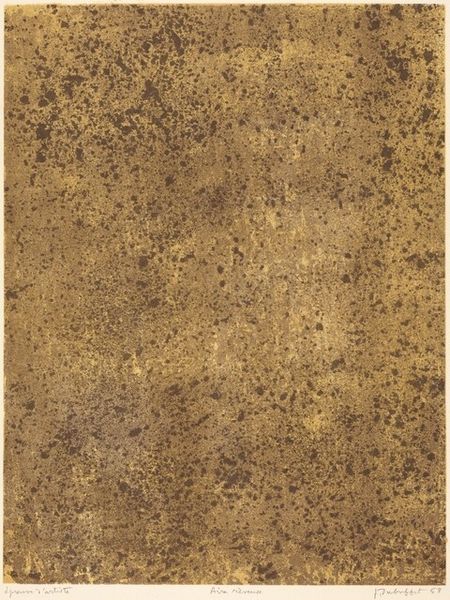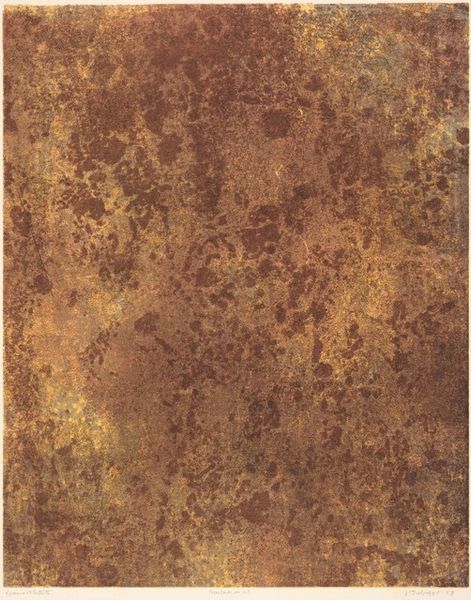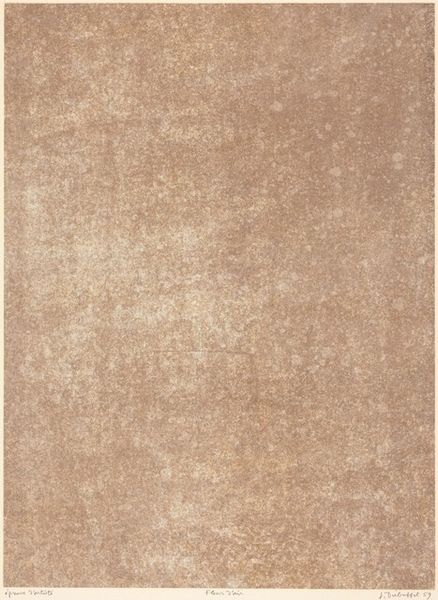
Copyright: National Gallery of Art: CC0 1.0
Editor: Here we have Jean Dubuffet's "Songes," created in 1959. It’s a print that appears to be done using frottage. What strikes me is the texture—it's almost like looking at the surface of a weathered stone. How do you read this work? Curator: Immediately, I consider Dubuffet’s process. He's deliberately rejecting traditional art materials and methods in favor of "low" techniques like frottage. What surfaces do you imagine he might have rubbed to achieve this texture? Is it industrial? Organic? Editor: I could see maybe concrete or some kind of rough textile, something everyday. The print itself doesn’t seem precious. It lacks a painterly hand that connects it to the artist's genius. Curator: Precisely. And how does that challenge our understanding of artistic skill and the value we place on certain types of labor? Dubuffet is questioning what we consider worthy of being called “art.” Do you find the texture repetitive, or does it contain a kind of rhythm or visual logic? Editor: I see rhythm in the varying densities of the marks. It keeps it from being monotonous. Curator: So, consider then, how Dubuffet elevates a common, nearly automated process into art. He forces us to reconsider beauty within the mundane. He also pushes back against a society obsessed with cleanliness and the “new”. Editor: That makes so much sense. It feels like a very tactile critique of consumer culture, where everything's mass-produced. I’ll never look at frottage the same way again. Curator: Indeed. It demonstrates how an artist’s choice of process and material are so inherently linked to meaning. Dubuffet wants you to think about what things are *made* of.
Comments
No comments
Be the first to comment and join the conversation on the ultimate creative platform.
